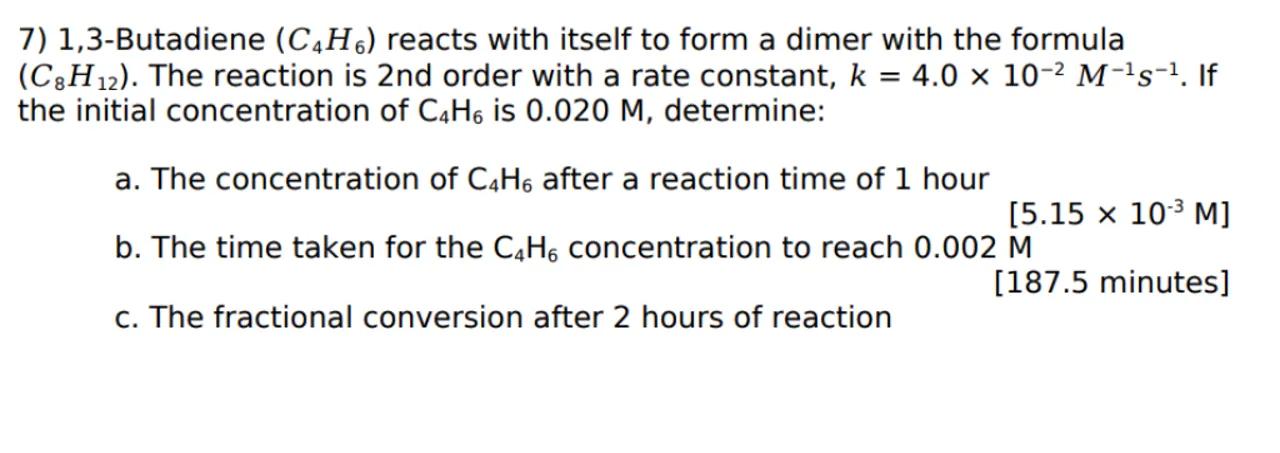
Sia
7) 1,3-Butadiene reacts with itself to form a dimer with the formula . The reaction is 2 nd order with a rate constant, . If the initial concentration of is , determine:
a. The concentration of after a reaction time of 1 hour
b. The time taken for the concentration to reach minutes
c. The fractional conversion after 2 hours of reaction

Answer from Sia
Posted over 1 year ago
Solution
1
Write the second-order rate law: For a second-order reaction where 1,3-butadiene dimerizes, the rate law is given by
2
Calculate the concentration after 1 hour: Convert 1 hour to seconds (1 hour = 3600 seconds). Use the rate constant and the initial concentration to find
3
Solve for the time to reach 0.002 M: Rearrange the rate law to solve for time when , and then convert the time from seconds to minutes
4
Determine the fractional conversion after 2 hours: Calculate the concentration after 2 hours using the rate law, then use the formula to find the fractional conversion
1 Answer
[5.15 x 10⁻³ M]
2 Answer
[187.5 minutes]
3 Answer
[Fractional conversion value]
Key Concept
The second-order rate law relates the concentration of a reactant to the time elapsed during the reaction.
Explanation
For a second-order reaction, the inverse of the concentration of the reactant minus the inverse of the initial concentration is proportional to the product of the rate constant and time.
Key Concept
The time required to reach a certain concentration in a second-order reaction can be calculated by rearranging the rate law.
Explanation
By isolating the time variable and substituting the known values, we can determine the time it takes for the concentration to decrease to a specific value.
Key Concept
Fractional conversion is the ratio of the change in concentration of the reactant to its initial concentration.
Explanation
It represents the proportion of reactant that has been converted into product over a given period.
Not the question you are looking for? Ask here!
Enter question by text
Enter question by image
Unlock Smarter Learning with AskSia Super!
Join Super, our all-in-one AI solution that can greatly improve your learning efficiency.
30% higher accuracy than GPT-4o
Entire learning journey support
The most student-friendly features
Study Other Question
